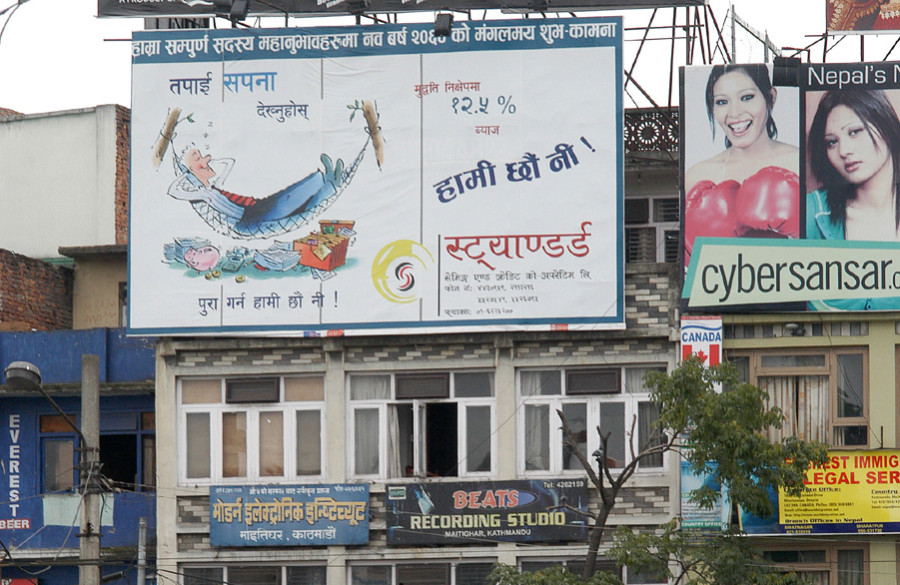Editorial
Billboard jungle
Disorganised placement of outdoor ads has made the city look ugly.
A mash-up of billboards clamour for one's attention in most places in most Nepali cities. From New Road to Koteshwor to Bouddha. A clutter of ads scream for attention from rooftops, lampposts, building balconies, and street sides. While these hoarding boards serve as a means to reach the clientele, they become an eyesore if placed without proper planning. And that is what has been happening in the Capital.
Despite the authorities promising to take stringent action against violators time and again, advertisement boards still dot the cityscape. The drive to clear the city of hoarding boards that carry commercial messages started almost seven years ago, but the drive has yet to be fully effective even after an order from the Supreme Court. For some time, the city was relatively free of big hoarding boards, mainly during the run-up to the SAARC Summit in 2018; but many cropped up eventually. Now, billboards and posters are seen everywhere—on the sides of overhead bridges, buildings that house businesses, lampposts and bus stations. While businesses should be allowed to promote their products and services via adverts on billboards, what should not be allowed is their haphazard placement.
[Related Story: Kathmandu is plastered with hideous hoarding boards and the city can't do anything about them]
Many big cities around the world have outdoor advertisements. They become quite instrumental in passing information. But if left unchecked, the proliferation of outdoor advertising can consume a city, as it has in Kathmandu. Their disorganized placement has made the city look ugly rather than interesting and exciting.
The impetus to ban advertising in cities has come from Kathmandu Metropolitan City, but it has never been sustained. Instead of banning hoarding boards outright, perhaps a more prudent approach would to indulge in proper city planning and place them following standard guidelines. The recent blunder at Tribhuvan International Airport is a fresh example. Two big hoarding boards welcome tourists to the city. But since they are placed right across the road from the airport’s main entrance, they block the view of Nagarjun hill on the western side of the Kathmandu Valley.
Over time, out-of-home advertising has melded itself inextricably into our environment wherein marketers have been exploring ambient outdoor advertising through street furniture, bus shelters, bus panels, foot over-bridges, and medians. They have almost become an urban wallpaper. Therefore, the idea is to not denude Kathmandu’s sign saturated streetscape of banners and hoarding boards, but to place them in a more organised manner. As reported in this paper, hoarding boards should follow standardised guidelines mentioning sizes, eye level, paint, bordering, glow, and other design aspects as well as the placement of signage.
The authorities at Kathmandu Metropolitan City should seek to enforce stricter measures when it comes to erecting billboards in public spaces because they serve the purpose of passing information. But yes, they to need to be aesthetically pleasing, placed in proper places and add to the beauty of the city, not sully it.
***
What do you think?
Dear reader, we’d like to hear from you. We regularly publish letters to the editor on contemporary issues or direct responses to something the Post has recently published. Please send your letters to [email protected] with "Letter to the Editor" in the subject line. Please include your name, location, and a contact address so one of our editors can reach out to you.




 19.12°C Kathmandu
19.12°C Kathmandu














